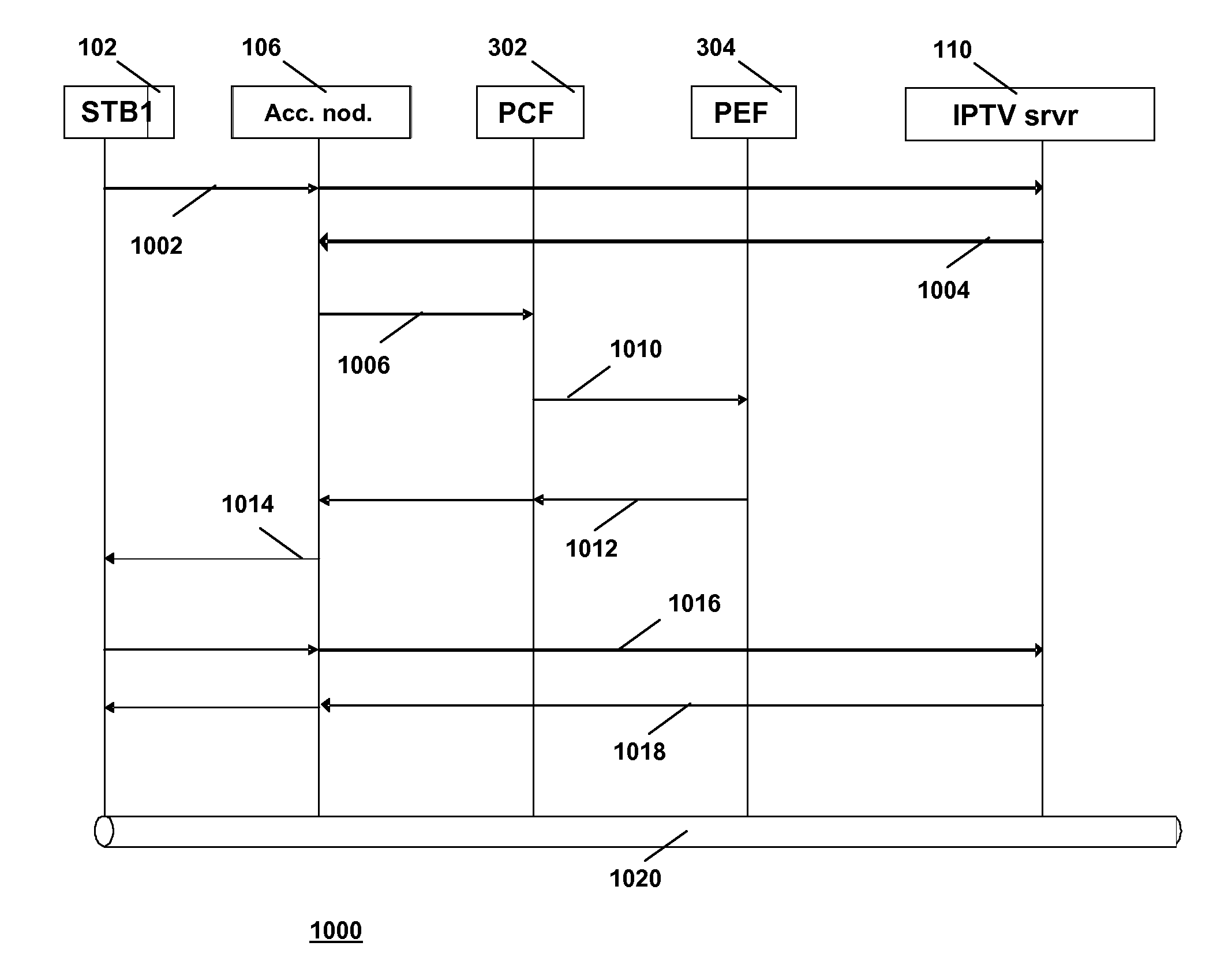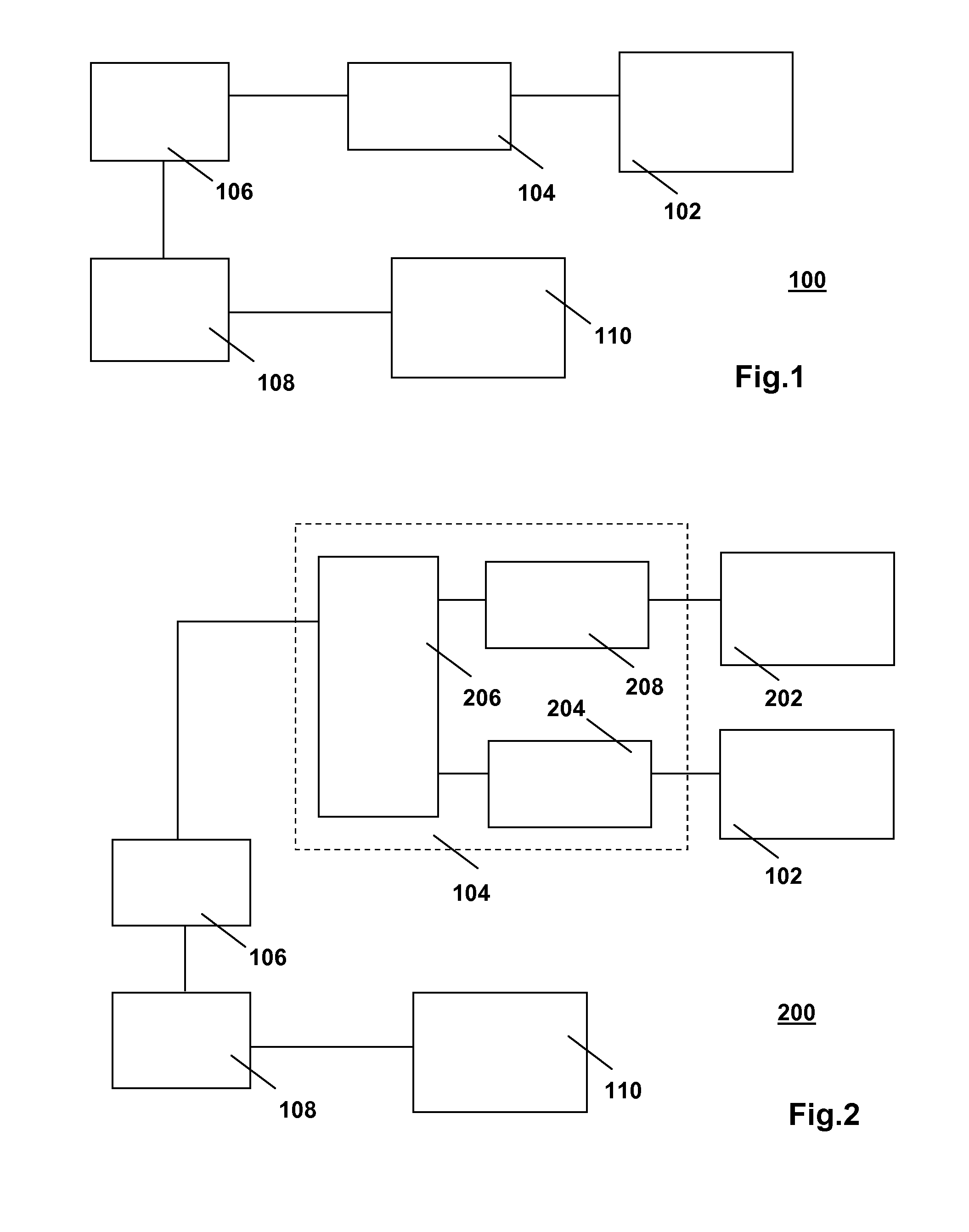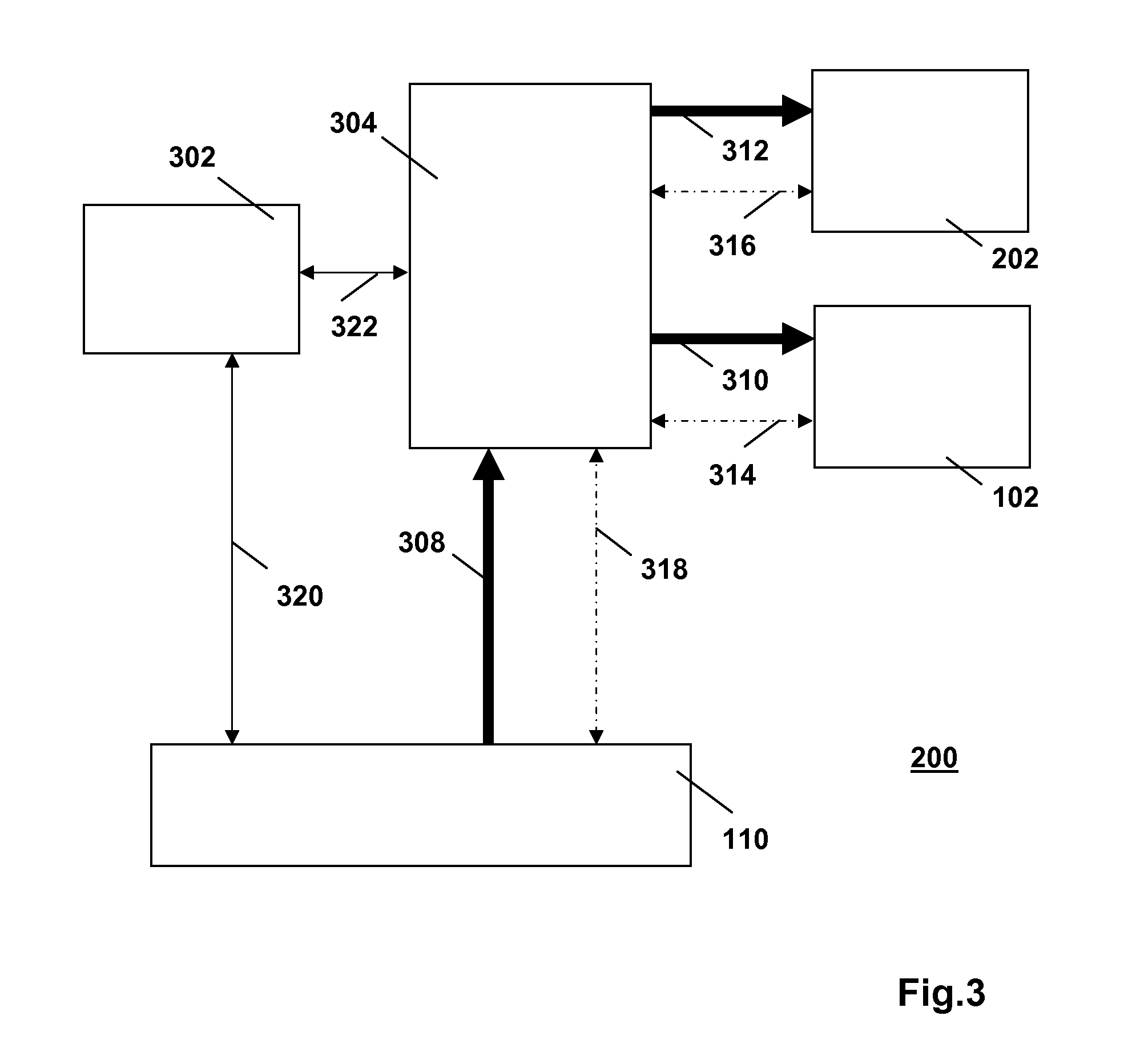Scalable Video Controls Bandwidth Allocation to Data Services
a bandwidth allocation and data service technology, applied in the field of scalable video control bandwidth allocation to data services, can solve the problems of limited bandwidth available, inability to use the internet service or receive phone calls, and limited connection size, so as to achieve the effect of less content information, more content information delivery services, and higher quality
- Summary
- Abstract
- Description
- Claims
- Application Information
AI Technical Summary
Benefits of technology
Problems solved by technology
Method used
Image
Examples
Embodiment Construction
[0049]An embodiment of the invention relates to a method of controlling an amount of bandwidth consumed by content information, being delivered by a content information source in a first data service, via a data connection to data processing equipment. The source has the content information available encoded in a layered coding scheme involving a base layer and at least one enhancement layer. The data processing equipment has available a first pre-determined amount of bandwidth on the data connection. The method comprises controlling, according to a pre-determined policy, the number of enhancement layers in the content information delivered. The number is controlled in dependence on whether or not further data services are using the data connection and are consuming bandwidth.
[0050]FIG. 1 is a first block diagram of a system 100 in the invention. The system 100 comprises data processing equipment 102, a data connection 104 between the data processing equipment 102 and an access node...
PUM
 Login to View More
Login to View More Abstract
Description
Claims
Application Information
 Login to View More
Login to View More - R&D
- Intellectual Property
- Life Sciences
- Materials
- Tech Scout
- Unparalleled Data Quality
- Higher Quality Content
- 60% Fewer Hallucinations
Browse by: Latest US Patents, China's latest patents, Technical Efficacy Thesaurus, Application Domain, Technology Topic, Popular Technical Reports.
© 2025 PatSnap. All rights reserved.Legal|Privacy policy|Modern Slavery Act Transparency Statement|Sitemap|About US| Contact US: help@patsnap.com



